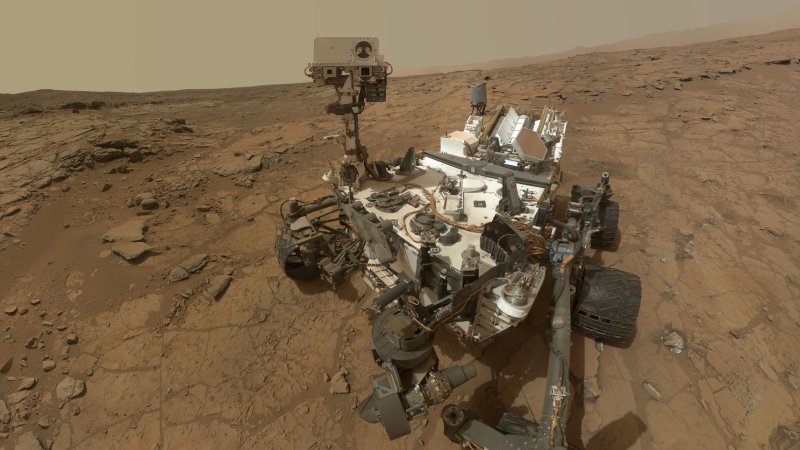This NASA image taken on February 3, 2013 shows a self-portrait of NASA's Mars rover Curiosity created by a combination of dozens of exposures taken by the rover's Mars Hand Lens Imager (MAHLI), on the surface of Mars, February 20, 2013. (File/UPI/NASA) |
License Photo
NASA scientists are disappointed to announce that Mars rover Curiosity still hasn't found any methane, a tell-tale sign of microbial life.
In 2004, three independent teams reported large plumes of methane gas in the Martian atmosphere. On Earth, about 90 percent of atmospheric methane is produced by microbial organisms, so scientists were excited by the possibility of life on Mars.
But Curiosity, equipped with methane-sniffing sensors, hasn't found any methane at all.
One plume was reported to contain some 19 metric tons of the gas, and scientists expected to find atmospheric methane at about 10 parts per billion. If there is any there, it is less than 1.3ppb, the instruments' detection threshold.
But now those findings are called into question as that much gas can't just disappear from the Martian atmosphere -- it should take hundreds of years to break down.
"Methane is very stable. It's almost boring in that sense," said Chris Webster, a member of the Curiosity team at NASA's Jet Propulsion Laboratory.
Curiosity averaged its measurements near Gale Crater, and found the upper limit of atmospheric methane to be just 1ppb.
"If all the other observations are true, the only way to reconcile the measurements is to make the already powerful loss mechanism even stronger," Webster said. "You would need to decimate that methane at least 100 times faster than known chemistry."
But scientists remain hopeful that methane could still be locked in subsurface ice structures, and that other microbes which don't produce methane could still be lurking in the Martian environment.







